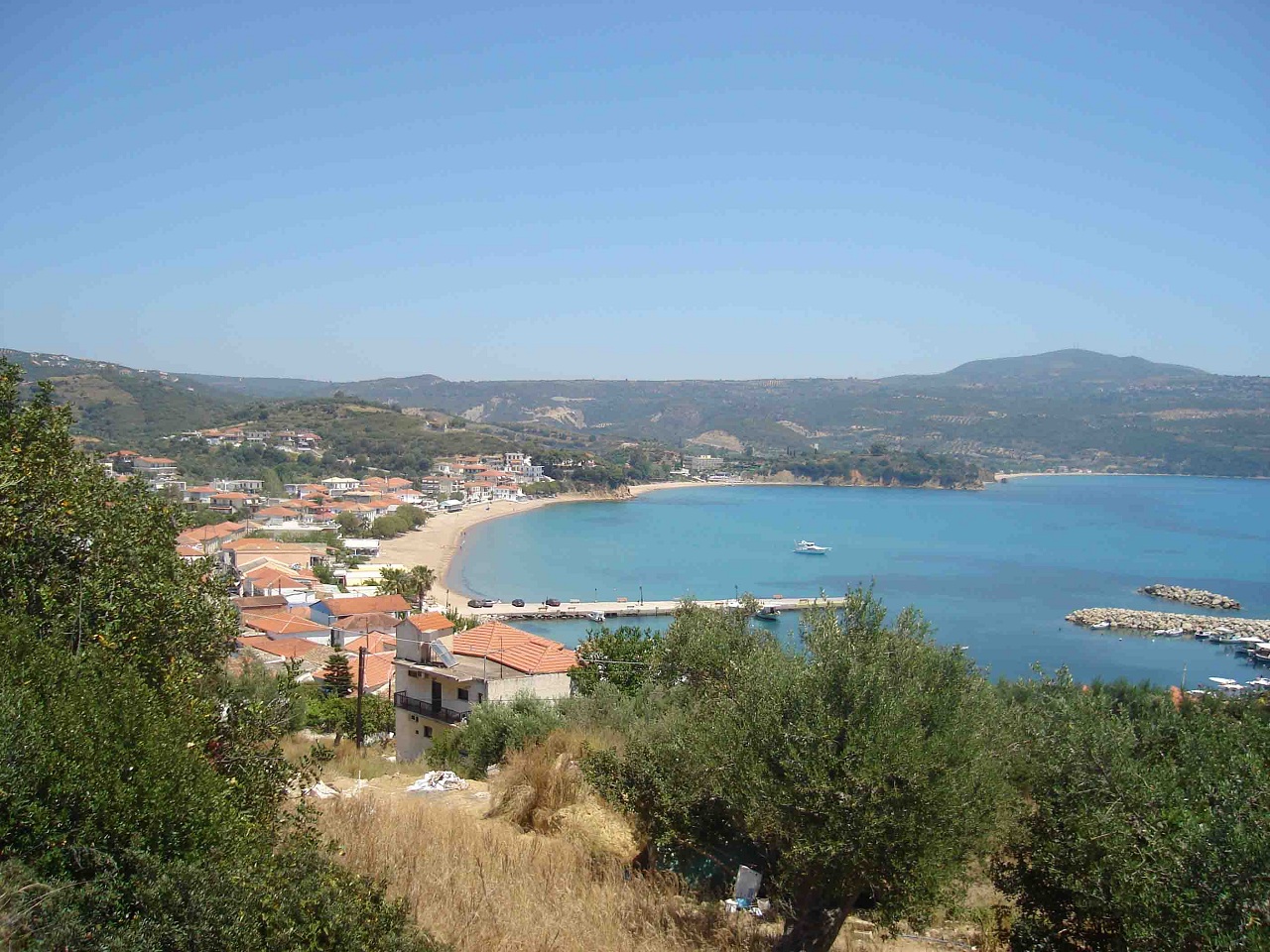
Finikounda is the “Phoenician Port”, as first mentioned by Pausanias who had toured the area. According to him, the Phoenicians, as a naval people, had colonized the area by founding a small town, Finikounda, which was mainly a shipping and transit center in the early Helladic period. This city was located on the sea side opposite the southwestern tip of Makrinammos beach, which is located next to the beach of Finikounda. At times the Phoenicians were a pirate stronghold. Due to a terrible earthquake, it is not clear when, the small Phoenician state sank to the bottom of the sea. Those who survived the Phoenicians settled on the hill of the Ascension, which is located between the two beaches. Archaeological finds have been found on the hill, which testify to the existence of a very old settlement. Today is the Finikounda Cemetery.
The name of Finikounda, however, does not come from the name of the Phoenicians but from the word phoenix. This is how purple was called in antiquity, a pigment produced by the processing of a kind of shell. The ancient people of the Phoenicians were familiar with the processing of this purple substance and wherever they created colonies they learned the art from the indigenous peoples.
Then the history of the area is lost in the centuries that follow. And it comes to life with the appearance of the residentsof the island of Crete in the area, at the end of the 19th century, who created a settlement three kilometers inland, the later village of Lachanada. Finikounda beach became its port. Many residents started fishing with the beach as a base for the sea, taking advantage of the creek of the coast which creates a natural inland, suitable for anchorage of their fishing boats. At one point a local made the first tavern near the coast, seeing that the beach was a passage. From this first tavern, Finikounda later received the unofficial name Taverna. Gradually the area in front of the beach of Finikounda began to be inhabited by the residents of the village Lachanada and residents of other neighboring settlements, coming mainly from the area of the Peloponnese Arcadia. At the beginning of the 20th century, the community of Finikounda was created. During the year 1970, the population composition changed, with the settlement of inhabitants of a neighboring settlement, Grizokampos, who are called Tsonaioi and constitute, by population, about half of the inhabitants of Finikounda. With the last law of Kallikratis, administratively, Finikounda belongs to the Municipality of Pylos-Nestoros.
OTHER HISTORICAL FACTS OF THE PHOENIX
a) In the wide area of Makrinammos beach, a statuette head of the god Zeus and two Kouros have been found.
b) On the island of Schiza of the Oinousses complex, which is located south of Finikounda, someone had taken refuge, persecuted by his brother. He was a descendant of the Royal House of Murdoch, a descendant of the Macedonian generals, who divided Alexander the Great’s Empire into a Kingdom. One of the Kingdoms was located between northern Pakistan and southern Afghanistan. From there he was expelled and ended up on the aforementioned island. According to a legend, inside the cave, where it exists in the southwest of the island, the Golden Uniform of the King is kept on the shore of a waterfall, which flows into the bowels of the island.
c) on one of the three islands of the Oinousses complex, in Sapienza, the ship carrying the Apostle Paul to Rome had sailed due to a storm.
d) on a nearby beach of Finikounda beach, in Loutsa comes a grandfather of Rigas Feraios.
e) in the wide area of Loutsa, on the bank of a river there is a Turkish bath.
f) in the wide sea area of Finikounda, from time to time, many shipwrecks and other archeological findings are located.
g) in neighboring areas of Finikounda there are many castles of different historical periods as well as other finds of great archaeological value. (See castles of Methoni, Koroni, Pylos, Palace of King Nestor).
NOTE: Many thanks to Mr. Aristidis Psycharis, former head of the Department of Informatics of the former Municipality of Methoni for the kind offer of the main historical reports about Finikounda.
